Improving the Surface Finish of Spur Gears Using Palm Oil-Based Lapping: Comparison with Other Industrial Lapping Solutions
Abstract
1. Introduction
2. Materials and Methods
2.1. Cylindrical Spur Gear Manufacturing and Measurement of Surface Roughness Values
2.2. Preparation of Lapping Solutions
2.3. Lapping Process
3. Results and Discussion
- -
- Research can be conducted to investigate the impact of the palm oil-based lapping solution on the surface forms of other machine elements and the alteration of gear tooth profiles.
- -
- The internal behavior of the lapping solution can be the sole focus of research.
- -
- Research can be conducted to investigate the behavior of palm oil in industrial settings and to determine how it can be transformed into a truly industrial product.
- -
- Academic research can be conducted on palm oil to investigate its lubrication performance in addition to its use as a lapping solution.
4. Conclusions
- -
- The palm oil-based lapping solution has proven to be the most effective, providing significantly greater improvement in surface smoothness compared to traditional grease and industrial mineral oil-based solutions.
- -
- Under the optimized parameters determined by Taguchi analysis, the palm oil-based lapping solution consistently provided the best surface quality and was found to be reliable for industrial applications.
- -
- In particular, the palm oil solution can provide exceptional surface quality improvements, and one test condition yielded the highest single improvement result recorded throughout the study.
- -
- It was observed that the palm oil lapping solution is practically applicable not only for gear wheels but also for lapping other precision machine components.
- -
- This research has successfully demonstrated that palm oil-based lapping solutions are high-performance, renewable, and effective, serving as a model for sustainable manufacturing applications.
Funding
Data Availability Statement
Acknowledgments
Conflicts of Interest
References
- Hu, B.; Zhou, W.; Tsuchiya, K. Mechanism elucidation of Sn-Bi alloy lapping plate surface instability. J. Alloys Compd. 2023, 965, 171465. [Google Scholar] [CrossRef]
- Deng, J.; Xiong, Q.; Nie, X.; Yan, Q.; Cao, J.; Lu, J. Optimisation of free-abrasive assisted lapping process with vitrified bonded diamond plates for sapphire substrates. Precis. Eng. 2024, 86, 183–194. [Google Scholar] [CrossRef]
- Di, W. Surface generating mechanism in surface shape error control for thin copper plate with large-diameter based on chemical mechanical lapping. J. Manuf. Process. 2023, 101, 639–655. [Google Scholar] [CrossRef]
- Su, J.; Zhang, X.; Xue, M.; Xiao, W.; Zhang, T. Study on Lapping Process of 304 Stainless Steel Using Tribochemical Fixed-Abrasive Lapping Platen. Manuf. Technol. 2022, 22, 231–239. [Google Scholar] [CrossRef]
- Taghizadeh, B.; Ehteshamfar, M.V.; Adibi, H. Lapping optimization of additively manufactured ABS-carbon fiber composite parts using the soft computing technique. Polym. Test. 2023, 128, 108241. [Google Scholar] [CrossRef]
- Zhao, T.; Ruan, J.; Feng, K.; Guo, L.; Chen, H.; Lyu, B.; Ding, J.; Jiang, X. Experimental study on the influence of lapping plate materials on the quality of both sides cylindrical rollers machining. Sci. Rep. 2025, 15, 1858. [Google Scholar] [CrossRef] [PubMed]
- Geng, K.; He, C.; Wang, S.; Chen, G.; Ren, C. The rotation stability of the tapered rollers in a novel ring-type lapping process. Precis. Eng. 2024, 88, 927–942. [Google Scholar] [CrossRef]
- Zhang, J.; He, C.; Chen, G.; Luo, M.; Ren, C. Theoretical and experimental investigation on double-disc straight groove lapping: Tool contour and lapping trajectory. Int. J. Adv. Manuf. Technol. 2024, 134, 1507–1531. [Google Scholar] [CrossRef]
- Wei, B.Y.; Deng, X.Z.; Fang, Z.D. Study on ultrasonic-assisted lapping of gears. Int. J. Mach. Tools Manuf. 2007, 47, 2051–2056. [Google Scholar] [CrossRef]
- Wen, J.; Du, W.; Hou, J.; Rong, S.; Zhou, Z.; Wang, Q.; Ding, H. Lapping tooth surface micro-topography prediction for extended epicycloid hypoid gears. Mech. Mach. Theory 2025, 206, 105931. [Google Scholar] [CrossRef]
- Wang, S.; Yang, J.; Li, B.; Zhao, J.; Wang, B.; Xin, W.; Cheng, B. Lapping adjustment method for actual surface of hypoid gears. J. Braz. Soc. Mech. Sci. Eng. 2023, 45, 122. [Google Scholar] [CrossRef]
- Pazarkaya, İ.; Yazar, M.; Karabulut, S.; Uzun, G.; Özdemir, A. Effect of lapping process on axis misalignment and surface roughness in elliptical gear pairs. J. Manuf. Process. 2024, 115, 192–201. [Google Scholar] [CrossRef]
- Durango-Giraldo, G.; Zapata-Hernandez, C.; Santa, J.F.; Buitrago-Sierra, R. Palm oil as a biolubricant: Literature review of processing parameters and tribological performance. J. Ind. Eng. Chem. 2022, 107, 31–44. [Google Scholar] [CrossRef]
- Cahyo Kumoro, A.; Saeed, M.T.M. Ultrasound-assisted transesterification of tropical goat fat—Palm oil blend for biodiesel synthesis. Energy Convers. Manag. X 2022, 14, 100213. [Google Scholar] [CrossRef]
- Al-Sabaeei, A.M.; Al-Fakih, A.; Noura, S.; Yaghoubi, E.; Alaloul, W.; Al-Mansob, R.A.; Khan, M.I.; Aliyu Yaro, N.S. Utilization of palm oil and its by-products in bio-asphalt and bio-concrete mixtures: A review. Constr. Build. Mater. 2022, 337, 127552. [Google Scholar] [CrossRef]
- Yahaya, A.; Samion, S.; Abidin, U.; Abdul Hamid, M.K. Different Behaviors of Friction in Open and Closed Forging Test Utilizing Palm Oil-Based Lubricants. Lubricants 2023, 11, 114. [Google Scholar] [CrossRef]
- Ikumapayi, O.M.; Laseinde, O.T.; Kazeem, R.A.; Onu, P.; Ting, T.T. The Development and Performance Assessment of Palm Kernel Nut Oil as a Cutting Fluid for the Turning of AA6061. Lubricants 2025, 13, 279. [Google Scholar] [CrossRef]
- Abozeid, A.A.; Youssef, M.M.; Megahed, T.F.; El-Helaly, M.; Pape, F.; Nassef, M.G.A. Tribo-Electric Performance of Nano-Enhanced Palm Oil-Based Glycerol Grease for Electric Vehicle Bearings. Lubricants 2025, 13, 354. [Google Scholar] [CrossRef]
- Stanciu, L. Evolution of the Rheological Behavior of Palm Oil. In Palm Oil—Current Status and Updates; IntechOpen: London, UK, 2023. [Google Scholar]
- Gupta, K.; Jain, N.K.; Laubscher, R. Advanced Gear Manufacturing and Finishing: Classical and Modern Processes; Elsevier: Amsterdam, The Netherlands, 2017; pp. 1–230. [Google Scholar]
- Kutay, M.G. Standart Sayilar. 2009. Available online: https://www.guven-kutay.ch/ozet-konular/01_standartlar.pdf (accessed on 4 November 2025).
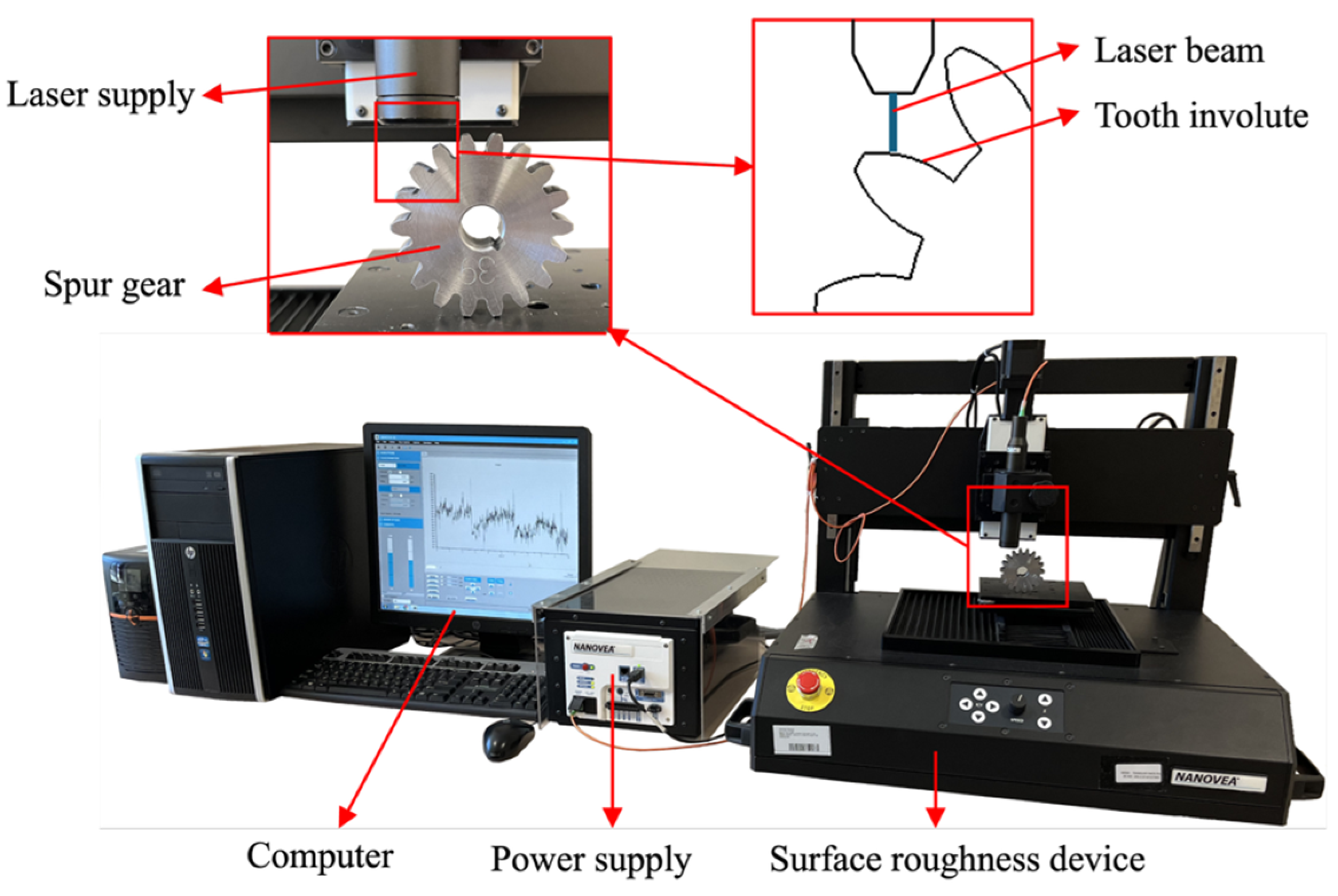
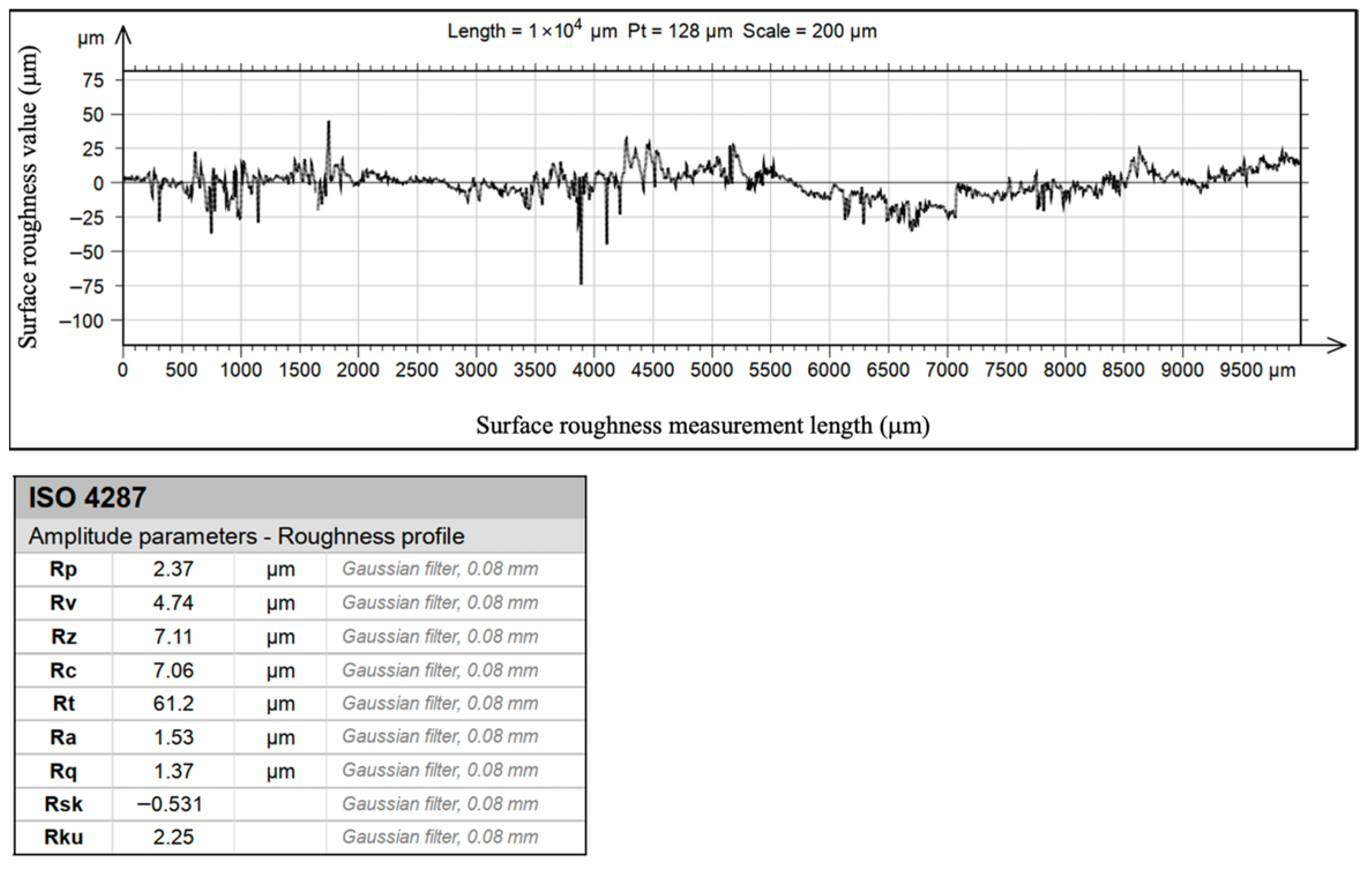
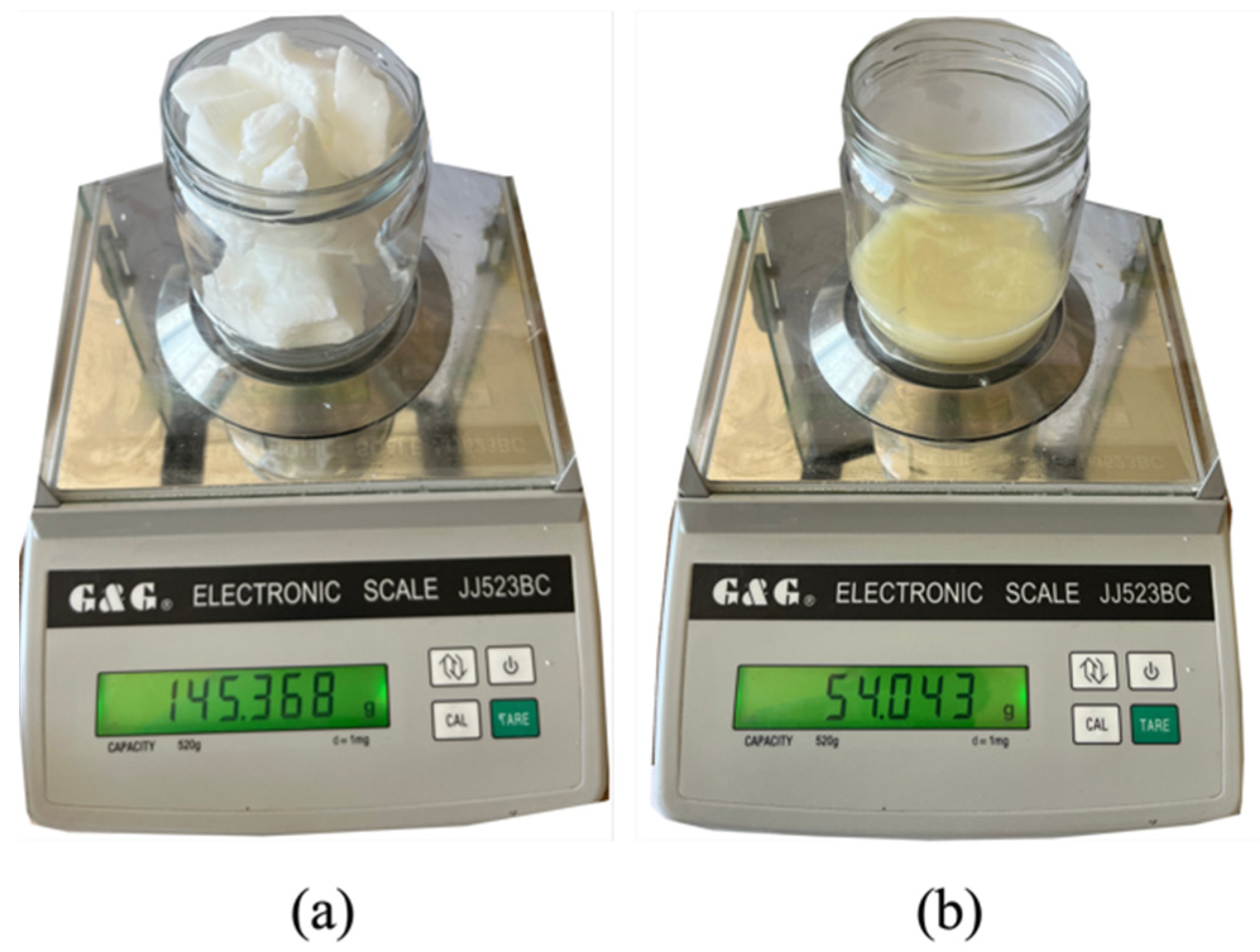
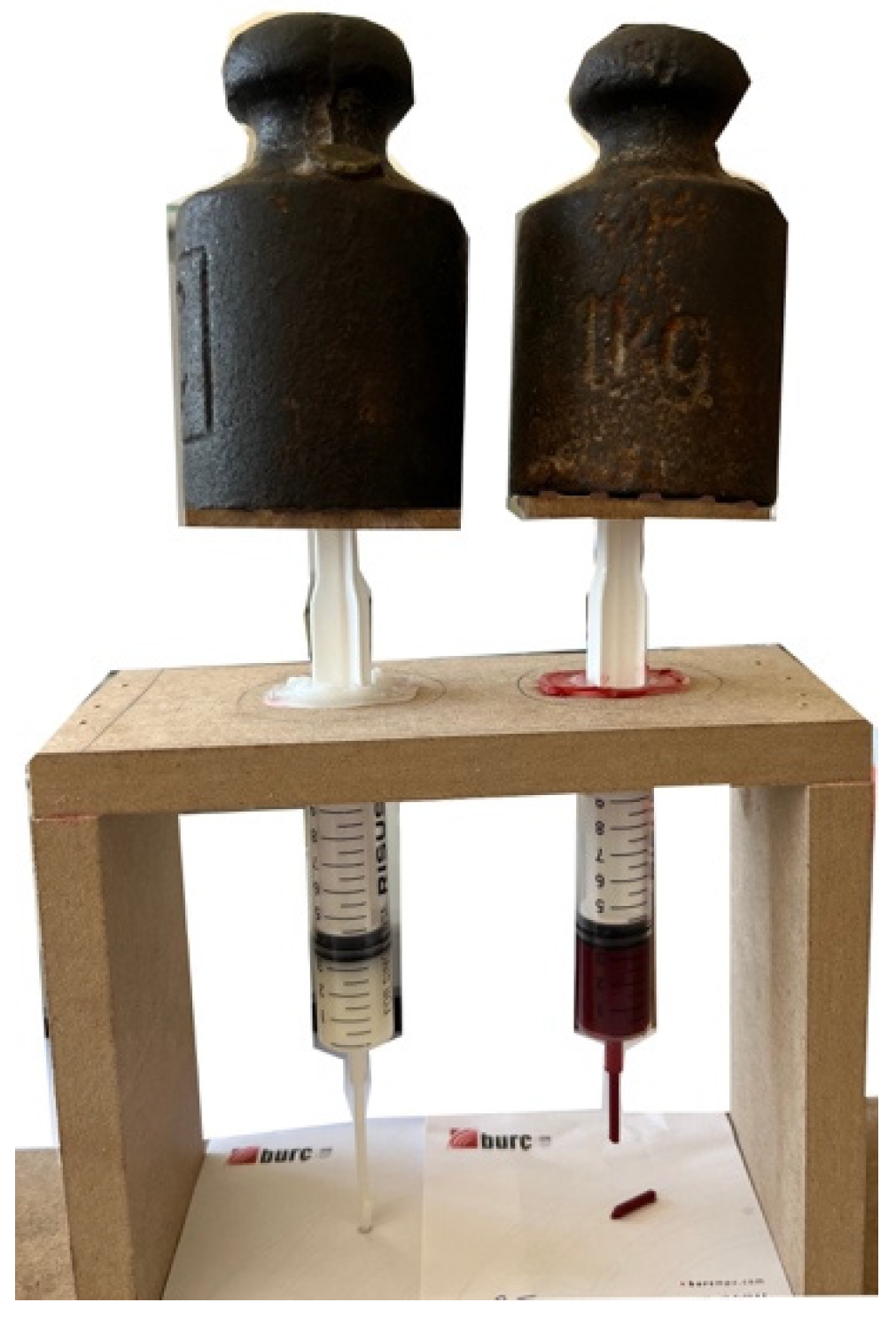


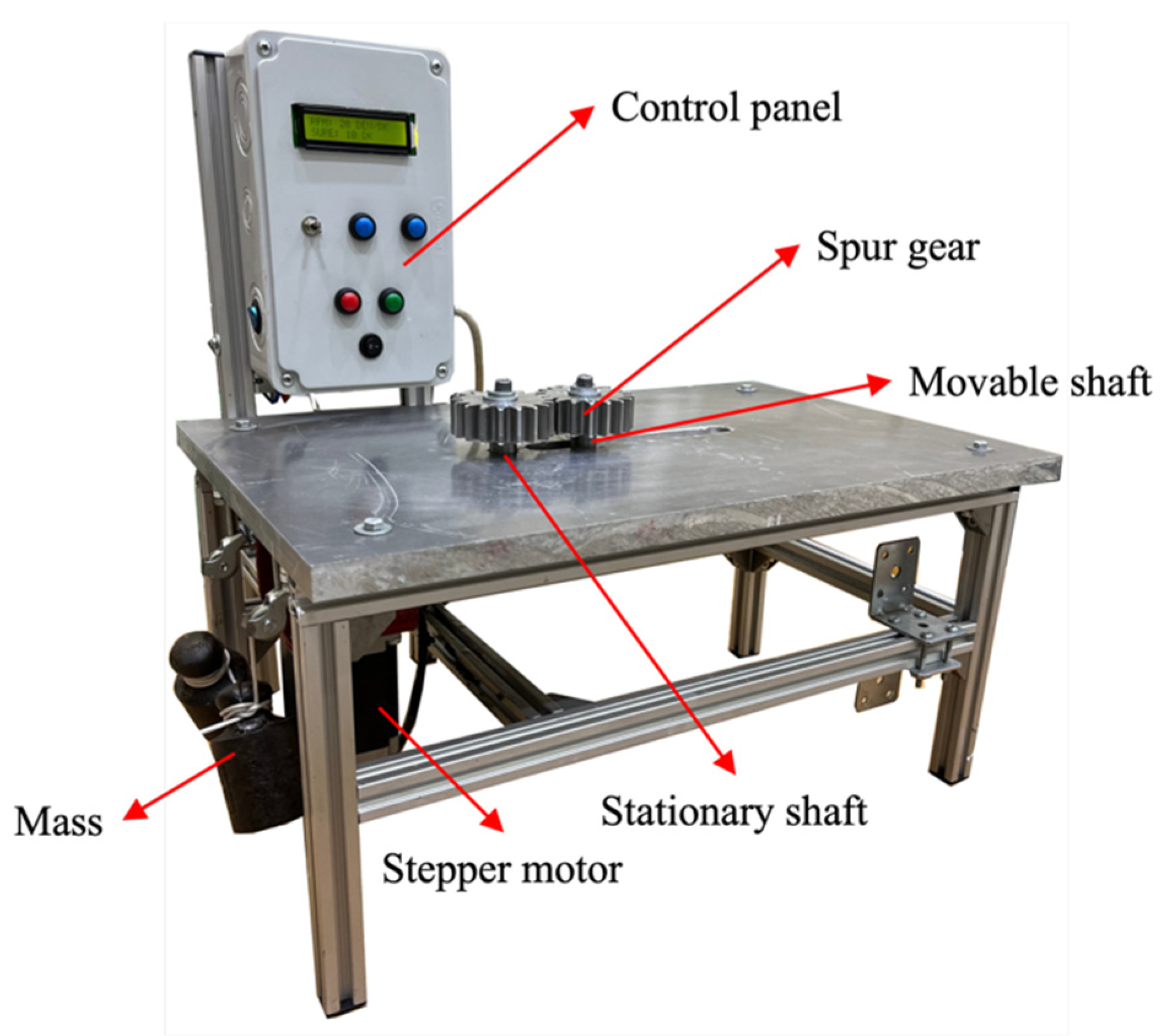



| Parameter | Value |
|---|---|
| Module (m) | 3 mm |
| Number of teeth (z) | 18 |
| Diameter of pitch circle (d) | 54 mm |
| Diameter of addendum circle (du) | 60 mm |
| Diameter of dedendum circle (dd) | 47,499 mm |
| Face with (b) | 20 mm |
| Pressure angle (α) | 20° |
| Physical and Chemical Properties | Stock |
|---|---|
| Melting point (°C) | 34.2 |
| Relative density (25 °C) | 0.8937 |
| Refraction index (50 °C) | 1.455 |
| Moisture and impurities (%) | 0.1 |
| Iodine index | 53.3 |
| Saponification index (mg KOH/g) | 208.2 |
| Hydroxide index (mg KOH/g) | 22.9 |
| Acidity index (mg KOH/g) | 26 |
| Lapping Solution | RPM (min−1) | Time (min) |
|---|---|---|
| 1 | 20 | 10 |
| 1 | 20 | 16 |
| 1 | 20 | 25 |
| 1 | 32 | 10 |
| 1 | 32 | 16 |
| 1 | 32 | 25 |
| 1 | 50 | 10 |
| 1 | 50 | 16 |
| 1 | 50 | 25 |
| 2 | 20 | 10 |
| 2 | 20 | 16 |
| 2 | 20 | 25 |
| 2 | 32 | 10 |
| 2 | 32 | 16 |
| 2 | 32 | 25 |
| 2 | 50 | 10 |
| 2 | 50 | 16 |
| 2 | 50 | 25 |
| 3 | 20 | 10 |
| 3 | 20 | 16 |
| 3 | 20 | 25 |
| 3 | 32 | 10 |
| 3 | 32 | 16 |
| 3 | 32 | 25 |
| 3 | 50 | 10 |
| 3 | 50 | 16 |
| 3 | 50 | 25 |
| Lapping Solution | RPM (min−1) | Time (min) | Before Lapping Ra (μm) | After Lapping Ra (μm) | Percentage Change | Average Percentage Change |
|---|---|---|---|---|---|---|
| 1 | 20 | 10 | 1.388 | 1.040 | −25.09% | −39.45% |
| 1 | 20 | 16 | 1.584 | 0.989 | −37.56% | |
| 1 | 20 | 25 | 1.486 | 0.938 | −36.88% | |
| 1 | 32 | 10 | 2.350 | 0.962 | −59.06% | |
| 1 | 32 | 16 | 2.310 | 1.181 | −48.87% | |
| 1 | 32 | 25 | 1.734 | 0.798 | −53.97% | |
| 1 | 50 | 10 | 1.426 | 1.040 | −27.10% | |
| 1 | 50 | 16 | 1.792 | 1.216 | −32.14% | |
| 1 | 50 | 25 | 1.408 | 0.923 | −34.42% | |
| 2 | 20 | 10 | 1.466 | 1.048 | −28.51% | −32.40% |
| 2 | 20 | 16 | 1.446 | 0.992 | −31.37% | |
| 2 | 20 | 25 | 1.346 | 0.940 | −30.19% | |
| 2 | 32 | 10 | 1.436 | 0.961 | −33.12% | |
| 2 | 32 | 16 | 1.316 | 0.903 | −31.40% | |
| 2 | 32 | 25 | 1.286 | 0.840 | −34.68% | |
| 2 | 50 | 10 | 1.492 | 0.969 | −35.04% | |
| 2 | 50 | 16 | 1.073 | 0.714 | −33.42% | |
| 2 | 50 | 25 | 1.368 | 0.904 | −33.89% | |
| 3 | 20 | 10 | 1.468 | 0.872 | −40.61% | −34.20% |
| 3 | 20 | 16 | 1.300 | 1.003 | −22.85% | |
| 3 | 20 | 25 | 1.301 | 0.682 | −47.60% | |
| 3 | 32 | 10 | 1.338 | 0.666 | −50.22% | |
| 3 | 32 | 16 | 1.284 | 0.971 | −24.41% | |
| 3 | 32 | 25 | 1.458 | 1.015 | −30.38% | |
| 3 | 50 | 10 | 1.256 | 0.718 | −42.87% | |
| 3 | 50 | 16 | 1.410 | 1.116 | −20.87% | |
| 3 | 50 | 25 | 1.492 | 1.074 | −28.02% |
Disclaimer/Publisher’s Note: The statements, opinions and data contained in all publications are solely those of the individual author(s) and contributor(s) and not of MDPI and/or the editor(s). MDPI and/or the editor(s) disclaim responsibility for any injury to people or property resulting from any ideas, methods, instructions or products referred to in the content. |
© 2025 by the author. Licensee MDPI, Basel, Switzerland. This article is an open access article distributed under the terms and conditions of the Creative Commons Attribution (CC BY) license (https://creativecommons.org/licenses/by/4.0/).
Share and Cite
Pazarkaya, İ. Improving the Surface Finish of Spur Gears Using Palm Oil-Based Lapping: Comparison with Other Industrial Lapping Solutions. Lubricants 2025, 13, 488. https://doi.org/10.3390/lubricants13110488
Pazarkaya İ. Improving the Surface Finish of Spur Gears Using Palm Oil-Based Lapping: Comparison with Other Industrial Lapping Solutions. Lubricants. 2025; 13(11):488. https://doi.org/10.3390/lubricants13110488
Chicago/Turabian StylePazarkaya, İbrahim. 2025. "Improving the Surface Finish of Spur Gears Using Palm Oil-Based Lapping: Comparison with Other Industrial Lapping Solutions" Lubricants 13, no. 11: 488. https://doi.org/10.3390/lubricants13110488
APA StylePazarkaya, İ. (2025). Improving the Surface Finish of Spur Gears Using Palm Oil-Based Lapping: Comparison with Other Industrial Lapping Solutions. Lubricants, 13(11), 488. https://doi.org/10.3390/lubricants13110488





